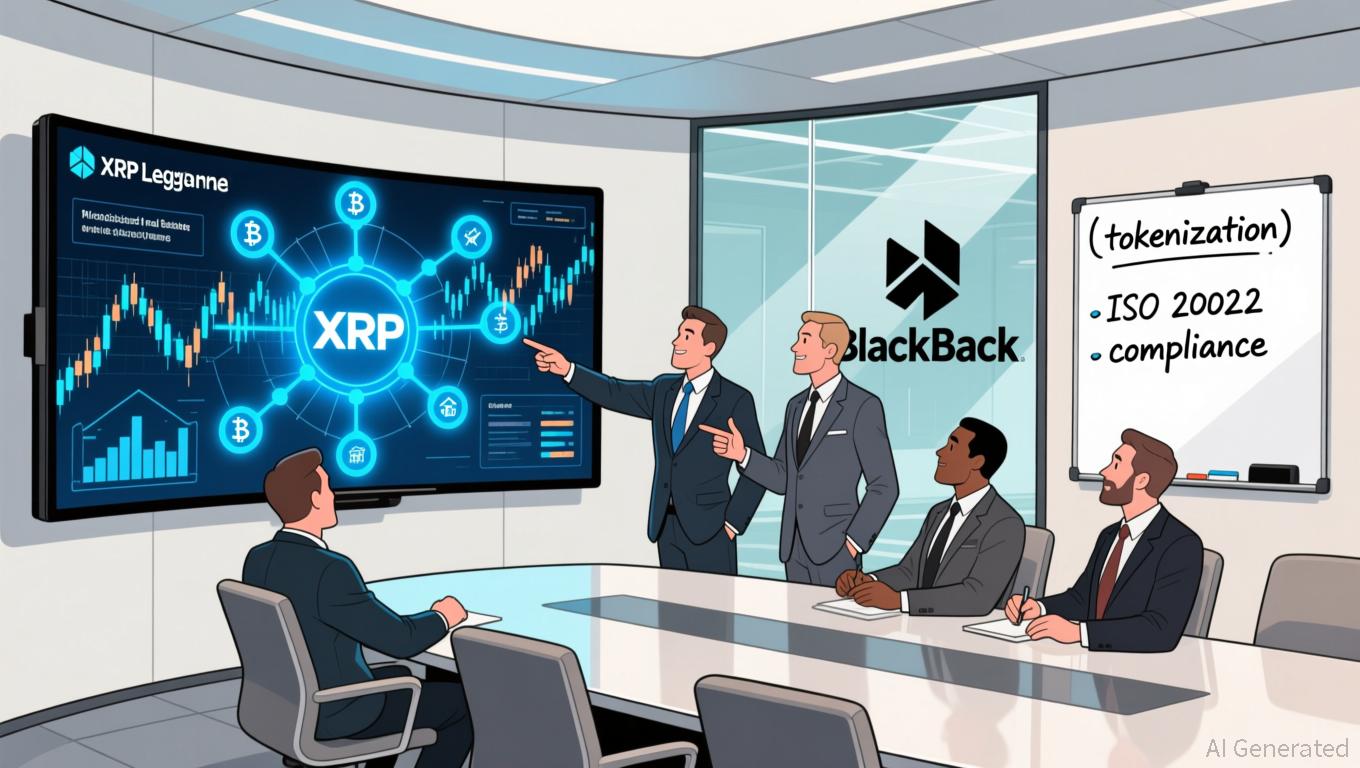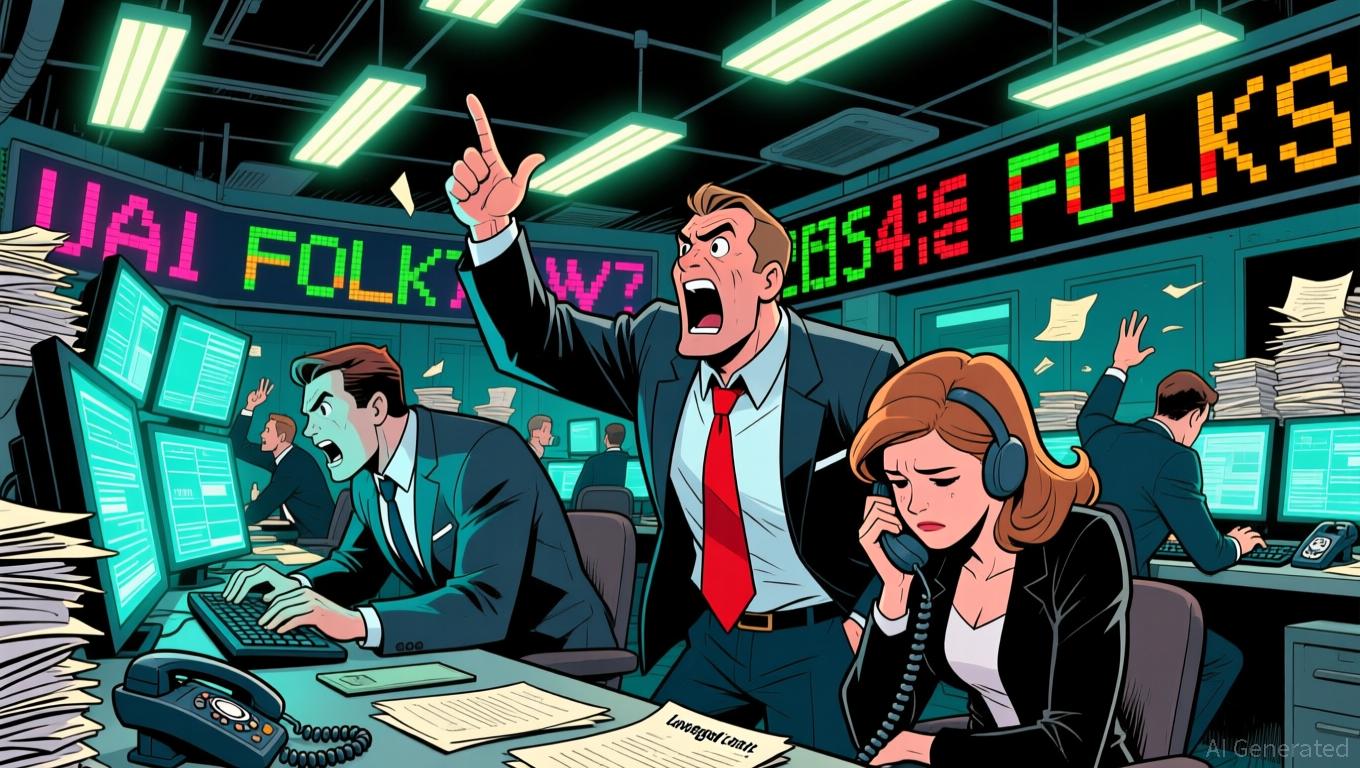Fed Backs Stablecoins While Regulations Lag Behind
- Federal Reserve officials highlight stablecoins as a transformative force in global payments, emphasizing cost reduction and cross-border efficiency. - Latin America's 60%+ crypto users adopt stablecoins like USDT to hedge against currency devaluation, with Brazil classifying them as formal assets. - U.S. banks and tech firms (PayPal, JPMorgan) leverage stablecoins for 24/7 settlements and low-fee transactions, accelerated by the GENIUS Act. - Regulatory challenges persist as bipartisan crypto legislatio
Federal Reserve leaders are increasingly viewing stablecoins as a game changer in global payments, with Governor Christopher Waller highlighting their ability to boost competition and streamline financial systems. During a recent central banking panel, Waller referred to stablecoins as an "intriguing new payment tool" that could lower costs for both consumers and businesses and speed up international transactions, according to
Waller pointed out that stablecoins function much like "synthetic dollars," using blockchain to mimic the roles of conventional bank money while offering increased speed and adaptability. "If stablecoins offer a cheaper solution, I fully support it," he stated, noting their rising use in regions where dollar banking is either inaccessible or costly. This trend is already visible in Latin America, where more than 60% of crypto users in Argentina have adopted stablecoins such as

Nonetheless, regulatory certainty remains a major challenge. The White House has announced progress on a bipartisan cryptocurrency bill designed to unify oversight of stablecoins and decentralized finance (DeFi) platforms, with lawmakers aiming for enactment by 2026, as reported by
Industry stakeholders are also calling for unified standards.
As stablecoins continue to challenge conventional payment systems, their future will depend on finding the right balance between innovation and strong protections. While some remain concerned about issues like price swings and fragmented regulation, increasing support from central banks, technology leaders, and lawmakers signals a major transformation that could reshape digital finance in the years ahead.
Disclaimer: The content of this article solely reflects the author's opinion and does not represent the platform in any capacity. This article is not intended to serve as a reference for making investment decisions.
You may also like
XRP whales cap selling as wallet growth hits 8-month high
XRP News Today: BlackRock's Investment in XRP Encounters Regulatory Hurdles While Trillions Remain on Hold
- BlackRock's Maxwell Stein highlighted XRP Ledger's role in tokenizing $trillions of real-world assets, partnering with Securitize to boost blockchain infrastructure. - Ripple's $500M funding at $40B valuation and XRP's ISO 20022 compliance intensify ETF speculation amid regulatory uncertainty over SEC's stance. - BlackRock faces scrutiny after a $500M fraud scandal at HPS, raising doubts about its crypto credibility despite XRP's Mastercard/WebBank integrations. - Industry splits on XRP's potential: Blac

Bitcoin Plummets Unexpectedly: Has It Hit the Floor or Is a Larger Downturn Ahead?
- Bitcoin fell 15% in August 2025 amid Fed policy shifts, China's crypto ban, and ETF outflows, testing its macro asset status. - The Fed's delayed rate cuts and inflation ambiguity created market uncertainty, while China's ownership ban disrupted liquidity and global demand. - On-chain data shows 375,000 BTC accumulation and a 1.8 MVRV ratio, suggesting structural resilience despite regulatory shocks. - ETF outflows ($291M total) reflect investor caution over inflation risks and regulatory gaps, but could

Bitget Connects Web2 and Web3 by Offering Zero-Fee Trades and Up to 50x Leverage on AI-DeFi Trading Pairs
- Bitget launched 50x-leveraged USDT-margined perpetual contracts for UAI and FOLKS, alongside automated trading bots to boost algorithmic accessibility. - The zero-fee U.S. stock token campaign and Kite (KITE) listing aim to bridge Web2/Web3 by integrating traditional assets with blockchain infrastructure. - With 120M+ users, Bitget's UEX model combines centralized efficiency with tokenized finance, targeting AI/DeFi growth through macroeconomic and onchain exposure.
